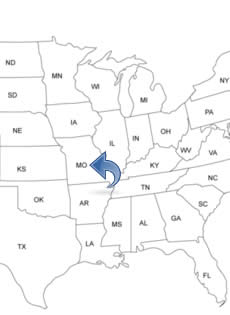MISSOURI PEOPLE SEARCH!
- ✔ Contact Info
- ✔ Phone Numbers
- ✔ Criminal Records
- ✔ Income Info
- ✔ Neighbors
- ✔ People's Age
- ✔ Property Ownership
- ✔ And Much More
Kansas City, Missouri
Kansas City is located in the central-western part in the U.S. State of Missouri, on the border of Missouri and Kansas. Kansas City is the largest city in the state. Only Rome in Italy has more fountains than Kansas City. The tap water in the city is rated as one of the cleanest in the United States. The city has often been called a Paris on the Plains because only Paris in France has more boulevards. Kansas City is perhaps most famous for its steak and barbecue.
To See And To Do In Kansas City
- American Jazz Museum
- Crown Center Shopping And Entertainment Complex
- National World War I Museum
- Downtown
- Toy and Miniature Museum
- Science City
- Nelson-Atkins Museum of Art
- Kemper Museum of Contemporary Art
- Country Club Plaza Shopping
- National Airline History Museum
- Worlds of Fun Amusement Park
History Of Kansas City - Timeline
In 1723, a French explorer named Étienne de Veniard Sieur de Bourgmont was the first documented European to visit Kansas City. Around 1750, French fur traders and trappers lived in the area.
In 1821, François Chouteau, born in St. Louis, Missouri, a pioneer fur trader, businessman and community leader was the first permanent European-American settler in Kansas City, Missouri. The place was called Chouteau's Landing. In 1822, the first church on the site was built, and farmers now arrived and settled.
In 1831, a group of Mormons settled in Kansas City and built a school and a ferry was established on the river. Two years later, in 1833, the Mormons were forced out by mob violence. Also in 1833, John McCoy built and opened a two-story cabin for travelers on the Santa Fe and Oregon trails. He also established a dock in the river and formed a company called the Town of Kansas. He is today considered the "father of Kansas City". In 1834, the first steamboat arrived. In 1838, Kansas City, Missouri was founded.
In 1845, the first U.S. Post Office was established. In 1847, Main Street was built. A group of investors began to settle the area and in 1850 the town was incorporated.
In 1851, the newspaper "Kansas City Ledger" was published and first telegraph service was established. In 1853, the Township of Kansas became the City of Kansas as chartered by the Missouri State Legislature. In 1864, a large battle with over 30,000 Union- and Confederate forces involved was fought. About 1.500 people died on each side and the Confederates retreated.
In 1869, the Hannibal Bridge opened. In 1878, the Union Station Depot opened. In 1880, the newspaper Kansas City Star was founded. (Originally called The Kansas City Evening Star). In 1886, the Hannibal Bridge was severely damaged by a tornado which collapsed a middle span. In 1889, the City of Kansas officially took the name of Kansas City.
In 1900, 163,700 people lived in the city. In 1909, the Kansas City Museum building was completed and the Zoo opened. In 1914, the new Union Station opened. In 1917, the second Hannibal Bridge opened and replaced the first Hannibal Bridge.
In 1921, the Mainstreet Theater opened. In 1923, the Country Club Plaza shopping district opened. In 1926, the Liberty Memorial was built. In 1928, the pianist, composer Burt Bacharach was born in the city. In 1931, the Power and Light Building was completed. In 1933, William Rockhill Nelson Gallery of Art/Nelson-Atkins Museum of Art opened.
Also in 1933, a gang tried to free a federal prisoner and four law enforcement officers and a criminal fugitive was killed in the shootout at the Union Station railroad depot. In 1935, the Municipal Auditorium opened. In 1951, the great flood devastated much of Kansas City. In 1968, the city became one of the cities to be the subject of rioting after the assassination Martin Luther King. Five people died, many were wounded and hundreds were arrested.
In 1973, the Major League Baseball stadium "Kauffman Stadium" opened. In 1974, the 19,500 seats indoor arena "Kemper Arena" opened. In 1981, 114 people were killed and 216 people were injured when the Hyatt Regency hotel walkway collapsed during a tea dance. In 1990, the Negro Leagues Baseball Museum was founded. In 2007, the multi-use indoor arena in downtown, "Sprint Center", opened.

